CT and Cooling (Part I)
With the rapid development of medical technology, Computed Tomography (CT) technology has evolved significantly over its long history, emerging as a crucial tool in modern medical diagnostics. From its initial single-function capabilities to its diverse applications today, CT plays an indispensable role in the early detection, diagnosis, and treatment of diseases. In the medical practice of our country, CT has transitioned from being a high-end device used solely for diagnosing complex cases to becoming an essential diagnostic technology.
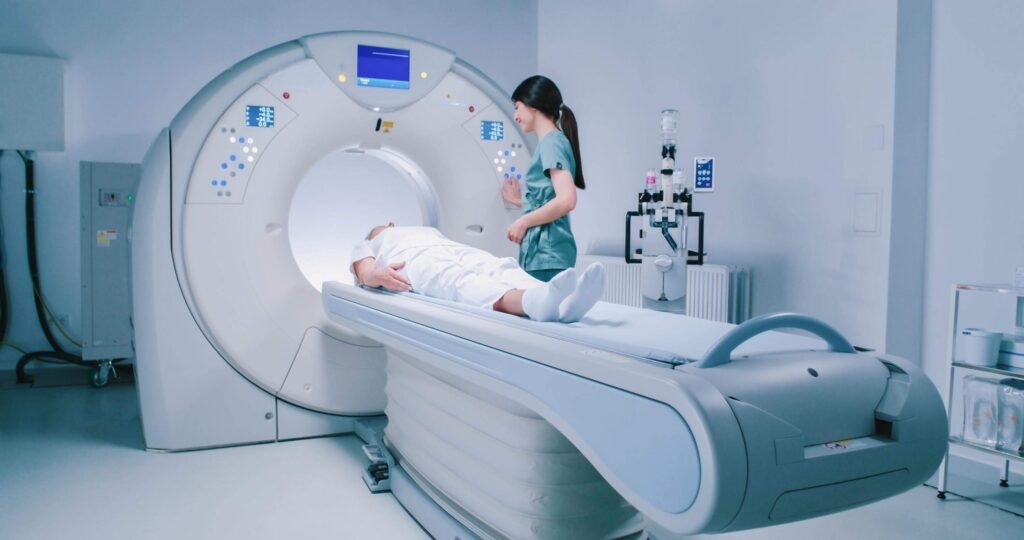
As more CT scanners are deployed in hospitals across the country, our unique medical environment has greatly improved. Due to the enormous patient flow in China, it's common for a single CT scanner to perform 200-300 scans per day, imposing higher and stricter demands on the performance of CT equipment. Looking back on the recent developments in CT technology, while some advancements have focused on faster scanning, higher resolution, and lower doses, practical evolution has continuously improved the equipment's ability to sustain operation and stability.
In this context, the advancement of core components of CT and the evolution of accompanying refrigeration modules have become key factors supporting the development of CT technology in these two directions. Core components such as the X-ray tube, detectors, and control systems undergo continuous innovation to enhance scan speed, increase resolution, and reduce radiation dose. Simultaneously, the performance and efficiency of refrigeration modules are continually improving to ensure equipment maintains stable temperature and operation under high-frequency usage.
Today, let's delve into the importance of the development of CT technology being closely related to refrigeration and potential future trends.
As CT technology becomes widely used in medical imaging diagnostics, the demand for its stability and performance is increasing. Refrigeration systems play a crucial role in this process by effectively cooling core components, ensuring prolonged and efficient operation of the equipment. With advancing technology, refrigeration systems not only require higher cooling efficiency but also smarter control and monitoring functions to meet evolving medical demands.
Let's start by discussing the X-ray tube, one of the critical core components of CT:
In CT technology, the X-ray tube is one of the most critical core components. As the primary generator of X-rays, the X-ray tube is responsible for producing high-energy X-ray beams to penetrate the patient's body and generate images. Therefore, the performance of the X-ray tube directly affects the quality and efficiency of CT scans.
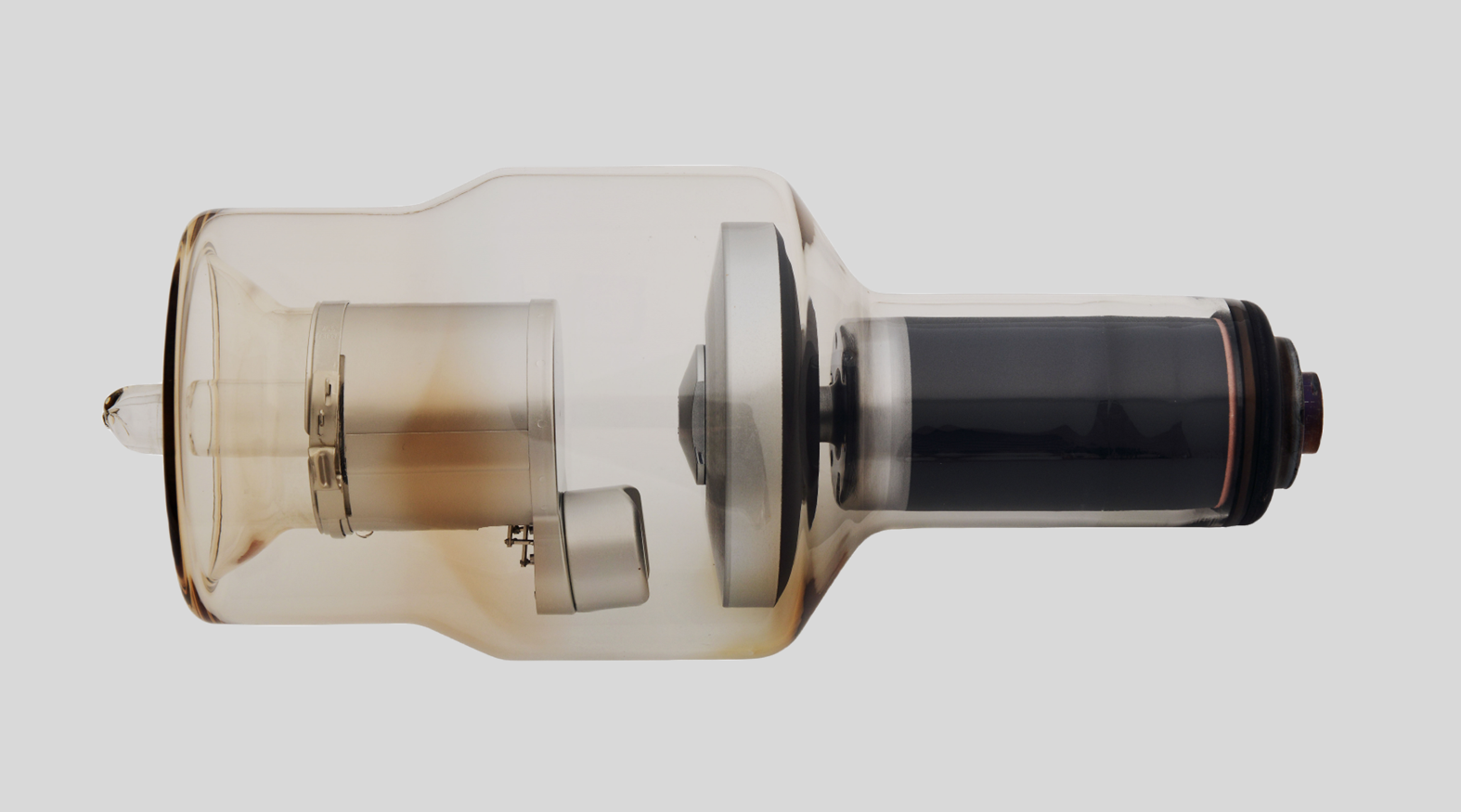
With the continuous advancement of medical imaging technology, the requirements for X-ray tubes are also increasing. Firstly, X-ray tubes need to have highly stable performance to ensure consistent X-ray output during prolonged scanning. One recurring theme in the development of X-ray tubes is the continuous improvement of the anode's heat capacity to cope with increasing heat loads, ensuring stable X-ray output.
In recent years, to further enhance the performance and stability of X-ray tubes, many X-ray tubes have begun to adopt liquid metal bearing (LMB) technology to increase their heat capacity. The application of this technology allows X-ray tubes to better cope with rapidly changing heat loads, improving the quality and efficiency of CT scans while reducing equipment maintenance costs. Taking the Dunlee CT8000 X-ray tube as an example, its equivalent heat capacity has been increased to an astonishing 34MHU due to the adoption of LMB technology.
However, despite the improvement in the performance of X-ray tubes, they still generate a significant amount of heat, which needs to be promptly removed through the refrigeration system. Without a stable and reliable refrigeration module to maintain the temperature of the X-ray tube under rapid heat load changes, overall performance cannot be enhanced. Especially during CT scans, where nearly 99% of the energy, reaching close to hundreds of kilowatts, is converted into heat, coupled with the X-ray tube's short and instantaneous working mode, higher requirements are placed on the corresponding refrigeration system. Therefore, the stability and efficiency of the refrigeration system are crucial for ensuring the normal operation of CT equipment and enhancing its performance.
Here are a few examples of problems caused by poor heat dissipation:
Material fatigue due to overheating:
If the CT X-ray tube has insufficient heat dissipation, resulting in excessive temperatures at the anode, the anode material may experience thermal fatigue. Prolonged exposure to high temperatures can alter the structure of the anode material, reducing its mechanical and electrical properties, and even leading to material damage.
The surface of the new anode is smooth and shiny, as shown in Figure (1). High temperature leads to surface structural damage, as shown in Figure (2); Exceed the maximum heat storage capacity, rotate slowly, and melt the surface, as shown in Figure (3); Repeated overload leads to insufficient rotation, causing surface fracture, as shown in Figure (4).
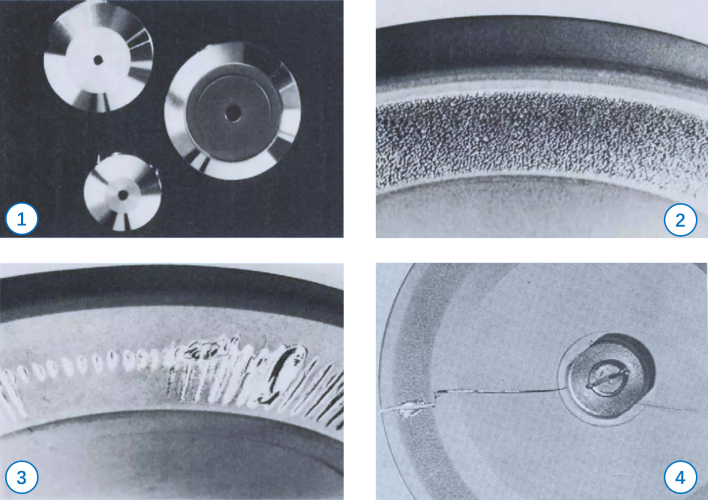
Increased risk of glass shell breakage due to overheating:
CT X-ray tubes are typically enclosed in a glass shell to isolate internal high-voltage circuits and protect internal components. If the X-ray tube's heat dissipation is inadequate, the glass shell may become fragile due to overheating, increasing the risk of breakage and resulting in tube damage.
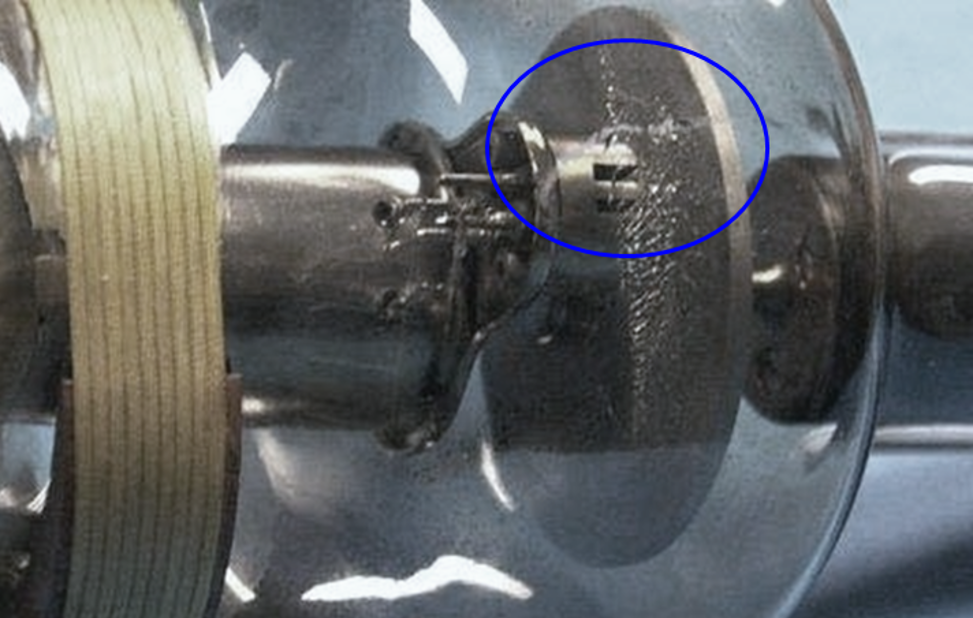
Reduced X-ray generation efficiency due to overheating:
Elevated anode temperatures can affect electron emission efficiency, thereby reducing X-ray generation efficiency. If the anode overheats, electrons may not effectively emit from the cathode, leading to a decrease in X-ray production, affecting image quality and imaging speed.
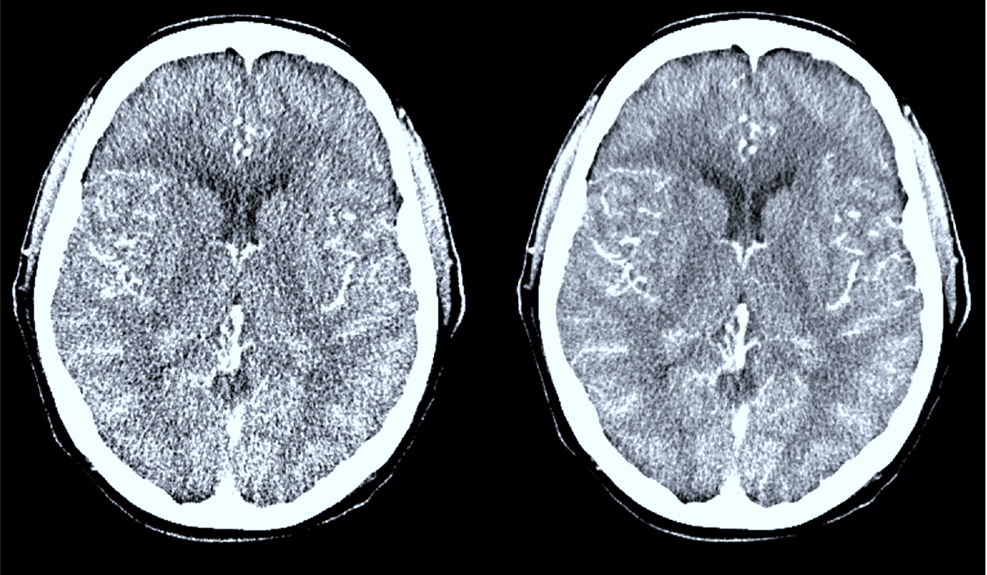
Improving the heat dissipation efficiency of the X-ray tube typically involves two main aspects:
1, Enhancing the "passive" heat dissipation efficiency:
Improving the "passive" heat dissipation efficiency is crucial, and it primarily involves optimizing the design of the X-ray tube structure. By improving the design of the X-ray tube's structure, such as using more efficient heat dissipation materials and structures, increasing the heat dissipation area, and reducing thermal resistance, the heat dissipation efficiency of the X-ray tube can be enhanced. The introduction of technologies such as liquid metal bearings and direct anode cooling has significantly increased the equivalent heat capacity of X-ray tubes, enabling them to withstand larger heat loads. The heat dissipation principle of liquid metal bearing X-ray tubes mainly relies on the high thermal conductivity and flowability of liquid metal, which helps effectively transfer heat from the high-temperature part of the X-ray tube to the cooler part of the bearing and dissipate heat to the external environment through the bearing's heat dissipation structure. Optimizing bearing structure and material selection can also reduce friction and wear, providing a more stable and reliable heat dissipation effect.
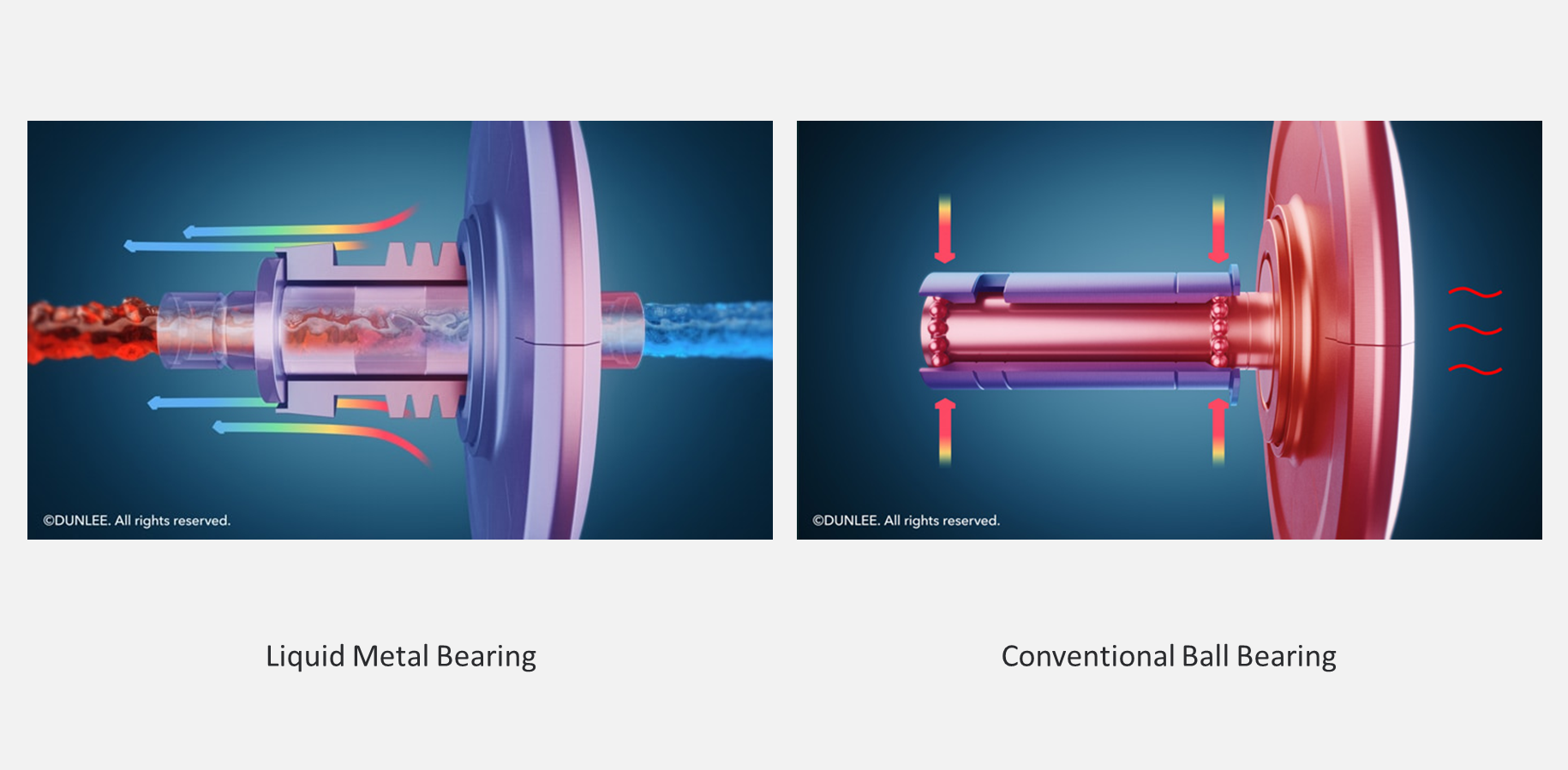
2, Enhancing the "active" heat dissipation efficiency:
Enhancing the "active" heat dissipation efficiency involves using active cooling methods, namely employing cooling systems to effectively cool the X-ray tube. Cooling systems help dissipate heat, prevent overheating, and maintain the optimal operating temperature of the X-ray tube. In terms of enhancing the active heat dissipation efficiency of the X-ray tube, modern refrigeration systems utilize a range of advanced technologies to ensure the X-ray tube maintains a stable temperature during operation and effectively dissipates the generated heat. Among these, variable-frequency compressors, variable-speed adjustment fans, customized PID control valves, and hot gas bypass valves are crucial components of refrigeration systems.
Let's take a look at several of the main components of the modern cooling system.
Variable-frequency compressor:
It automatically adjusts the compressor's operating speed and condensing pressure according to the actual requirements to match the heat load generated by the X-ray tube. By adjusting the compressor's speed, variable-frequency compressors can flexibly control the flow and pressure of refrigerants, thereby achieving efficient refrigeration, reducing energy consumption, and improving system stability and reliability.
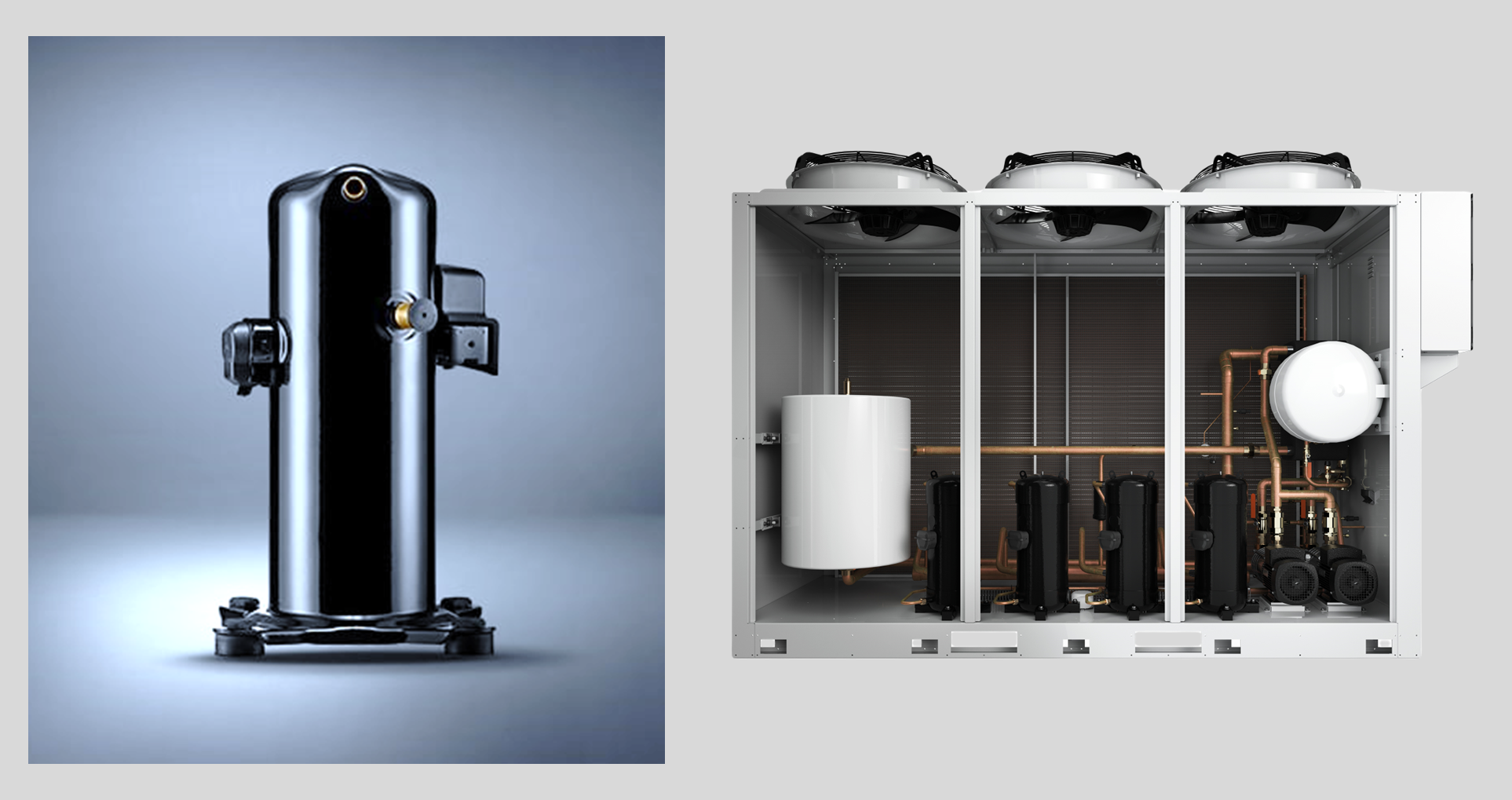
Variable Speed Fans:
These fans can adjust their speed and airflow as needed to ensure the cooling system's efficiency. By adjusting the fan speed based on the operating status of the tube and ambient temperature, variable speed fans can effectively expel heat from the cooling system in a timely manner, maintaining a stable temperature.
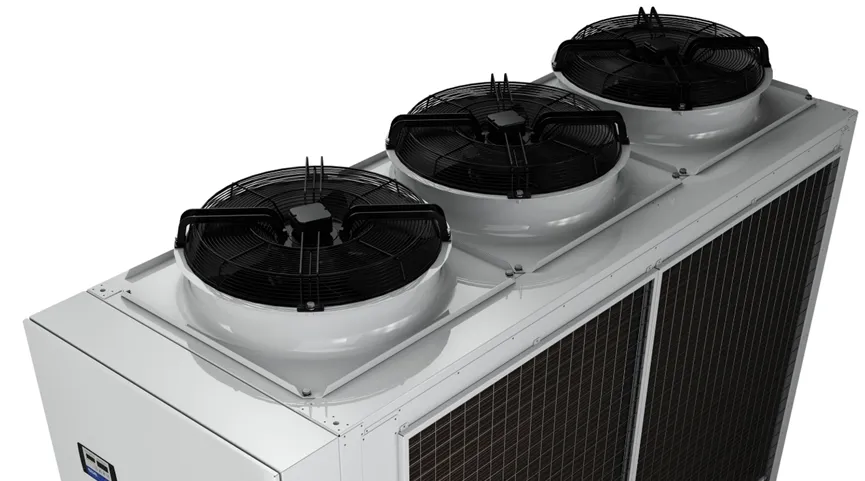
Customized PID Control Valves:
PID control valves monitor the temperature and pressure of the cooling system, utilizing proportional, integral, and derivative control algorithms. They continuously monitor the temperature and pressure within the cooling system, automatically adjusting the valve opening according to preset control strategies to ensure the tube of the CT system maintains a stable temperature under different operating conditions. Firstly, PID control valves can respond rapidly and accurately to temperature changes, allowing the system to quickly return to a stable state, ensuring image quality.

Secondly, PID control valves can optimize the energy efficiency of the cooling system by adjusting the refrigerant flow to meet actual demands, avoiding overcooling or overheating and reducing energy consumption and operating costs.
Furthermore, PID control valves can enhance the stability and reliability of the system, reducing equipment failures and downtime, thereby improving the overall system stability. Most importantly, PID control valves can provide precise temperature control, ensuring the CT tube maintains a stable temperature under various operating conditions, thereby enhancing image quality and equipment reliability to meet the precision imaging demands of the medical imaging field.
Hot Gas Bypass Valve
It is a critical component used to control the flow of refrigerant within the cooling system. It can adjust the flow direction and volume of refrigerant as needed to ensure the cooling system maintains a stable temperature and pressure under different operating conditions. By promptly removing the hot gas generated within the cooling system, the hot gas bypass valve can effectively improve the system's cooling efficiency, protecting the tube from the risk of overheating and damage, thereby enhancing equipment reliability and stability.
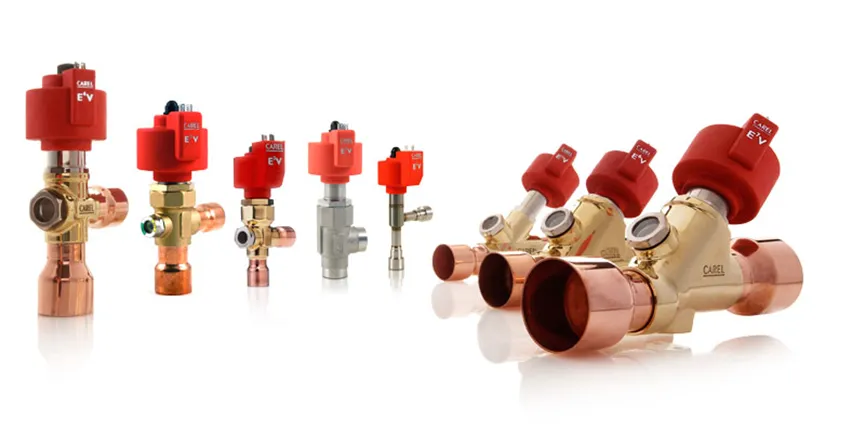
However, an efficient and adaptive CT cooling system relies on professional refrigeration experience and a deep understanding of the CT industry.
How to integrat these technologies into practical applications for CT systems requires significant technical expertise and application experience from the cooling module manufacturer.
Firstly, they need to have a thorough understanding of the working principles and environmental conditions of medical equipment, including the operating principles, temperature requirements, and usage environments of CT equipment. This understanding is crucial for designing the parameters and functions of the cooling system to ensure it can closely integrate with CT equipment and provide stable, reliable cooling effects.
Firstly, they need to have a thorough understanding of the working principles and environmental conditions of medical equipment, including the operating principles, temperature requirements, and usage environments of CT equipment. This understanding is crucial for designing the parameters and functions of the cooling system to ensure it can closely integrate with CT equipment and provide stable, reliable cooling effects.
Secondly, cooling module manufacturers need to possess advanced technical capabilities, including refrigeration technology, control technology, sensor technology, and more. They need to continuously develop innovative refrigeration technologies to meet the growing demands of medical equipment manufacturers. For example, they can research and develop more efficient, energy-saving refrigeration systems to reduce the operating costs of medical equipment or develop intelligent control systems to improve the stability and reliability of the refrigeration system.
Additionally, cooling module manufacturers need to have excellent service capabilities. They should be able to provide comprehensive support and services to medical equipment manufacturers, including technical consultation, customized design, installation and debugging, and after-sales maintenance. This ensures that medical equipment manufacturers can receive timely, professional support throughout the entire product lifecycle, thereby ensuring that CT equipment can maintain excellent performance and operation under various working conditions.
Get Professional and Efficient CT Cooling Solutions To learn more details about CT cooling solutions, you are welcome to visit:
April 11th-14th, 2024 The 89th China International Medical Equipment Fair (Spring) Booth S45, Hall 4.1 Glenntin Price China
Our R&D experts will provide you with detailed demonstrations of the latest CT cooling solutions and introduce our latest CT tube cooling products. These products not only have efficient and stable performance but also can meet your strict requirements for medical equipment, providing strong support for your medical career.

In this issue, we collectively explored the cooling requirements of CT systems and analyzed how to enhance the performance of the tube to support the ultra-high-frequency use of CT. We welcome everyone to actively express their opinions and suggestions. In the next issue, I will continue to discuss the role of cooling in ensuring the stable and efficient operation of CT systems, and delve into the various cooling challenges that medical customers currently face with CT systems. See you in the next issue!
